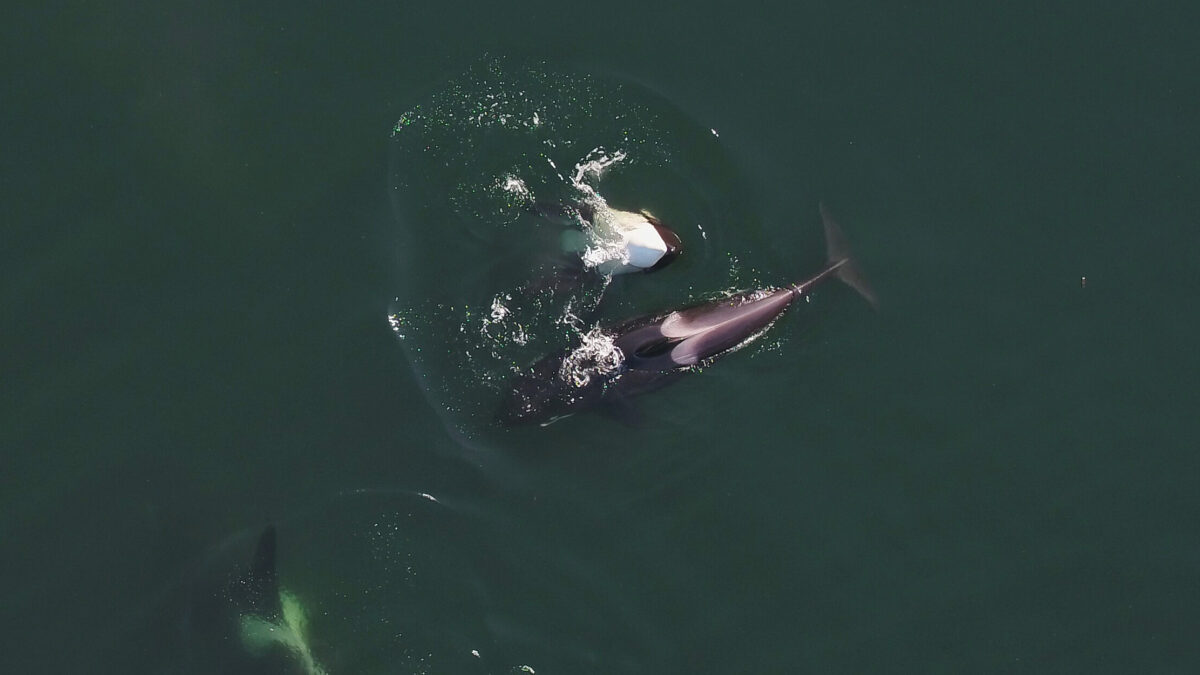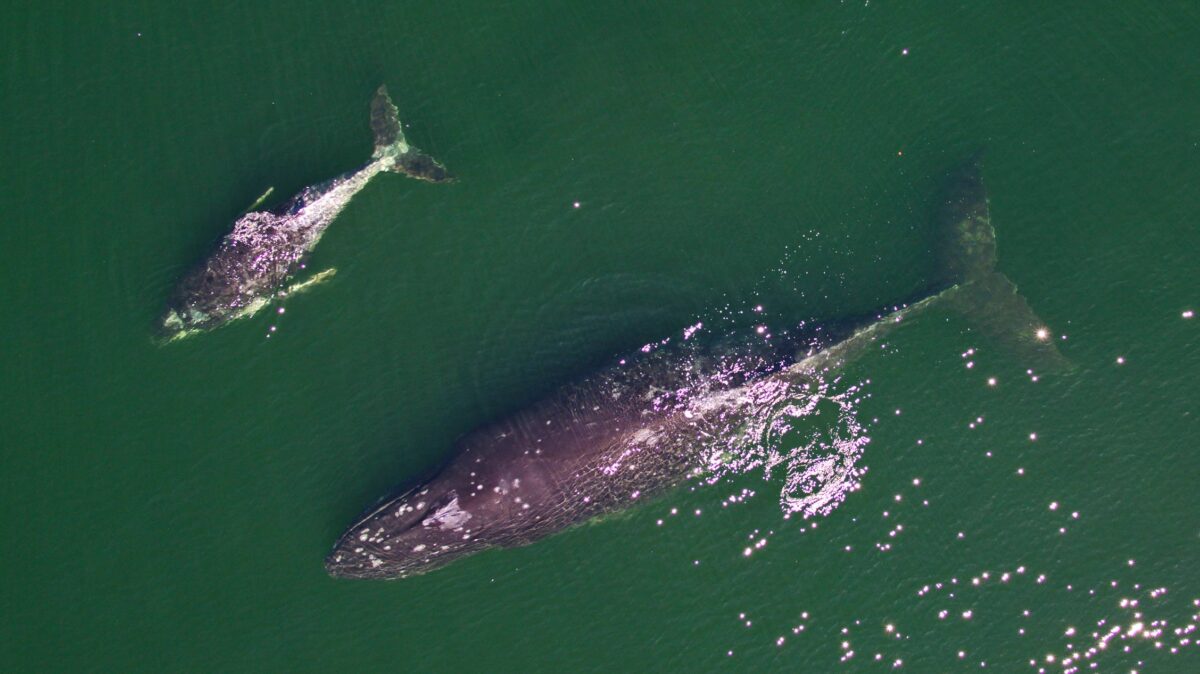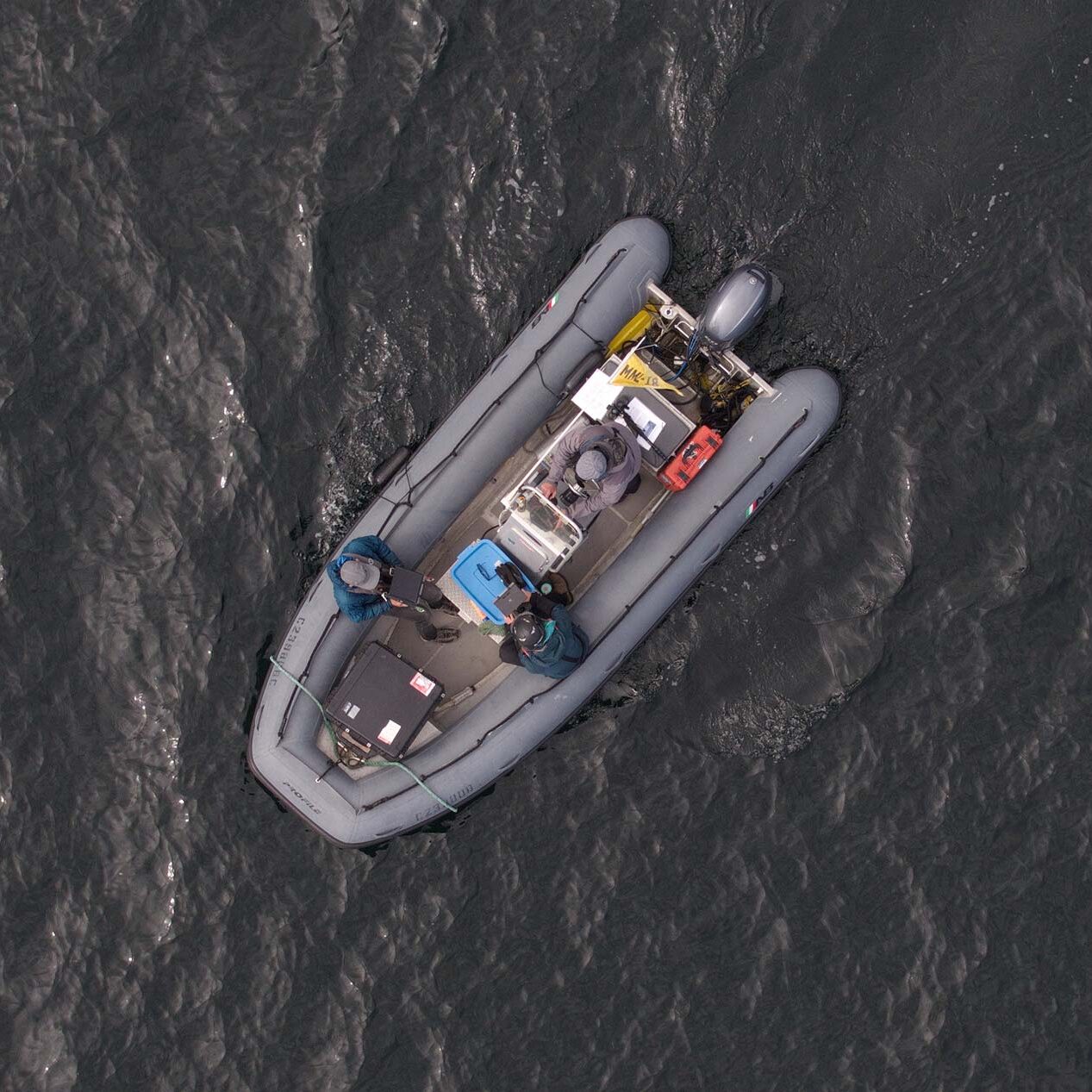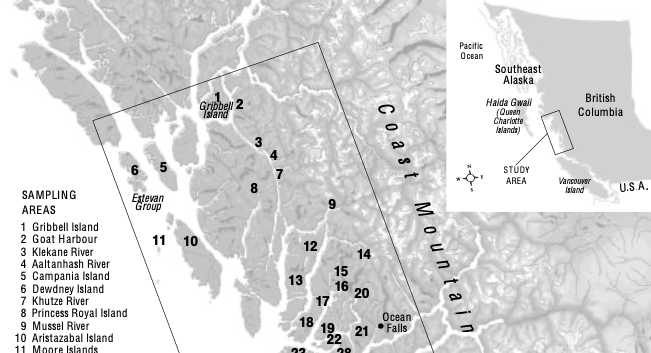Cetacean Health: using imagery to understand the health of killer whales
Photo by Lance Barrett-Lennard / Ocean Wise.
Our annual monitoring program, in collaboration with OceanWise Research, assesses the health of whales. Every year we take aerial photos of individually identified resident killer whales with small, minimally invasive drones, and use photogrammetry to accurately measure the whales’ body condition and growth rates, and determine whether they are pregnant. Our measurements provide a direct indication of the whales’ nutritional status and allow us to draw reliable inferences about their overall health. The value of this research is that it allows us to assess the impact of salmon abundance–which is strongly influenced by human fisheries–on the whale’s reproduction and survival.


Applied research
Findings from the photogrammetry research thus far helped motivate increased restrictions on sport and commercial fisheries in Canada, as well as the creation of sanctuary zones where the whales can forage without disturbance by boats. It also provided valuable insights into Chinook stocks of greatest importance to Southern Residents—an analysis we plan to begin shortly with Northern Residents. The time series of body condition measurements on both populations becomes more valuable with each passing year.
Project history
In 2014, Lance Barrett-Lennard worked with Washington-based research colleagues, Drs. John Durban and Holly Fearnbach, to develop a photogrammetry-based method of assessing the body condition of killer whales using aerial photographs from minimally invasive, boat launched drones. The study was a key recommendation of a US/Canadian panel attempting to assess the impact of salmon fisheries on Southern Resident killer whales.
The project grew into an annual monitoring program, monitoring Northern and Southern Resident killer whales and Bigg’s killer whales opportunistically. Comparing the two populations, one in perilous condition and the other recovering, has helped make it possible and practical to determine when killer whales are nutritionally stressed, and to assess the impacts of such stress on survival and reproduction.

Recent articles
Wolf Project Journal, August 2002
In our last dispatch we had not yet learned of…
Journal of the Wolf Project – June 2002
After a long winter analyzing last year’s samples and data,…
Yeo Island Wolf Home Site Recommendations
A proposed solution to the potential conflict between the home…
Field Journal, August 2001
Bella Bella, 2001 We all wore waders, we split up…
The Gray Wolves (Canis lupus) of British Columbia’s Coastal Rainforests
Herein, we present the most comprehensive scientific report to date…
The Gray Wolves, Canis Lupus, of British Columbia’s Central and North Coast: Distribution and Conservation Assessment
Darimont, C.T., and P.C. Paquet. 2002. The Gray Wolves, Canis…
Conservation Areas Design for the Central Coast of British Columbia (2000) Executive Summary only
Richard Jeo, M.A. Sanjayan, Dennis Sizemore Over the last century,…



